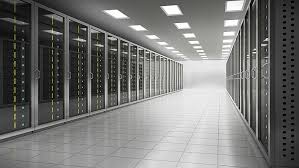Introduction
Technologies for Data centers are the backbone of the digital age, housing critical IT infrastructure that powers everything from cloud computing to online services. As the demand for faster processing, larger storage, and more efficient data management grows, so does the need for advanced technologies to ensure these facilities operate smoothly. Modern data centers rely on a wide range of cutting-edge technologies, from advanced cooling systems and energy-efficient power solutions to AI-driven automation and cybersecurity tools. These innovations not only enhance performance but also address sustainability and cost-efficiency, making them crucial for meeting the evolving needs of today’s data-driven world.
Adiabatic Cooling Systems: Adiabatic cooling systems use both air and water to cool data centers effectively, often without reaching the saturation point that traditional cooling towers do. This hybrid approach helps reduce water usage significantly, making it ideal for data centers in regions with water scarcity.
Advanced Control Systems: Integrating advanced control systems and IoT technologies allows data centers to monitor and adjust cooling tower performance in real-time. These systems can use AI and machine learning algorithms to predict temperature changes, optimize fan speeds, and adjust water flow rates, improving energy efficiency and reducing unnecessary strain on the cooling system.
Water-Free Cooling Solutions: Data centers increasingly turn to water-free or ultra-low water consumption cooling technologies to reduce reliance on water resources. These systems, such as air-cooled heat exchangers, allow for effective heat removal without the need for continuous water flow, making them more environmentally friendly and cost-effective.
Hybrid Cooling Towers: Hybrid cooling towers combine wet and dry cooling processes, automatically adjusting based on external weather conditions. By switching between water-based and air-based cooling, hybrid systems offer flexibility and greater control over water and energy consumption, which is especially beneficial for regions with seasonal climate variations.
Energy Recovery and Reuse: Modern cooling tower technologies incorporate energy recovery systems that capture and reuse heat generated within the data center. This recovered energy can be redirected to other parts of the facility, like heating nearby office spaces, helping reduce overall energy usage.
Modular and Scalable Cooling Towers: Scalable cooling towers can be expanded as the data center grows, allowing facilities to add cooling capacity without replacing the entire system. These modular systems help manage initial costs and make it easier for data centers to meet fluctuating cooling demands efficiently.
Environmentally Friendly Refrigerants: New cooling tower designs increasingly rely on eco-friendly refrigerants with low global warming potential (GWP), aligning data center operations with environmental regulations and reducing their carbon footprint.
Free Cooling: Many data centers in cooler climates use free cooling technology, which leverages the natural cold air from outside to reduce the need for mechanical cooling. By integrating free cooling towers, data centers can cut down on energy use and extend the lifespan of mechanical cooling equipment.
Enhanced Water Treatment Systems: Innovative water treatment solutions, like UV sterilization and electrochemical treatment, help reduce scaling and biological growth in cooling towers, improving efficiency and lowering maintenance costs. Enhanced water treatment also reduces the risk of Legionella and other waterborne contaminants.
Optimized Design for High Density Cooling: As data centers handle more intensive computing tasks, high-density cooling is becoming a focus. New cooling tower technologies include designs that cater specifically to high-density racks and equipment, enabling efficient cooling in smaller footprints and ensuring stable temperature control even during peak load times.
Conclusion
Technologies for data centers are continually evolving to meet the increasing demands for speed, efficiency, and sustainability in the digital world. From advanced cooling systems and energy management to AI-driven automation and robust cybersecurity, these innovations are essential for optimizing performance while reducing environmental impact and operational costs. As data centers expand in scale and complexity, the integration of cutting-edge technologies will remain critical in ensuring their reliability, security, and ability to handle the growing needs of the global digital ecosystem.

